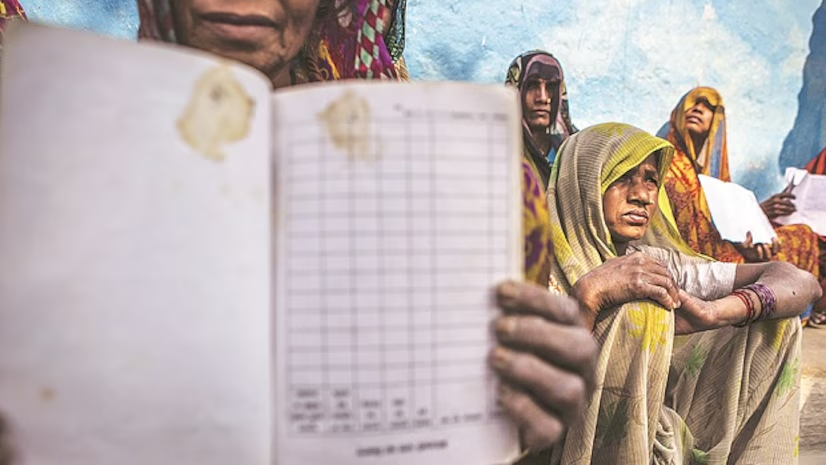Introduction
India has implemented several schemes to enhance the socio-economic conditions of its rural population. One of the most prominent among these is the National Rural Employment Guarantee Act (NREGA). The scheme aims to provide a 100-day employment guarantee in a financial year to adult members of rural households willing to do unskilled manual work. A critical component of this scheme is the MG NREGA Job Card, which plays a crucial role in the implementation and monitoring of the scheme.
This article delves into what is NREGA, how to apply for an MG NREGA Job Card under NREGA, and the various aspects associated with it.
What is NREGA?
The National Rural Employment Guarantee Act (NREGA), now known as the Mahatma Gandhi National Rural Employment Guarantee Act (MGNREGA), was enacted in 2005. The primary aim of NREGA is to enhance livelihood security in rural areas by providing at least 100 days of guaranteed wage employment in a financial year to every household whose adult members volunteer to do unskilled manual work.
The program also aims to create durable assets like roads, canals, ponds, and wells. Furthermore, it helps in promoting social inclusion, gender equity, and sustainable development. As of the latest available data, millions of rural households have benefitted from NREGA.
Importance of an MG NREGA Job Card
An MG NREGA Job Card is an essential document under the NREGA scheme. It is proof of registration and an entitlement for the legal wage employment guarantee. The Job Card includes details of the workers in a household, photographs of the members, and important details regarding employment provided and wages paid. Essentially, the MG NREGA Job Card helps in:
– Facilitating access to NREGA benefits
– Ensuring transparency and accountability in wage payments
– Tracking the days of employment provided to the job card holder
Procedure to Apply for an MG NREGA Job Card
Applying for an MG NREGA Job Card involves a systematic procedure that ensures transparency and ease of access. Below are the steps involved:
Step 1: Obtain the Application Form
Villagers can obtain the MG NREGA Job Card application form free of cost from the Gram Panchayat office. The form is straightforward and designed to be comprehensible to the rural population.
Step 2: Filling the Application Form
The application form requires basic information about the applicants, including:
– Name of the head of the household
– Names and age of adult members willing to work
– Address and photograph of the household members
– Aadhar card details of the applicants if available
Applicants must ensure that all details provided are accurate to avoid any discrepancies later.
Step 3: Submission of Application Form
Once the form is duly filled, it should be submitted to the Gram Panchayat office. The Gram Panchayat Officer (GPO) accepts the application and issues a receipt as an acknowledgment. This receipt is crucial as it serves as proof of application and facilitates tracking of the application status.
Step 4: Verification Process
Post submission, the Gram Panchayat officials verify the details provided in the application. They conduct field visits to validate the household information and the willingness of the members to work.
Step 5: Issuance of Job Card
After successful verification, the Gram Panchayat issues the MG NREGA Job Card within 15 days of application submission. The job card is handed over to the registered household.
Step 6: Activation of Job Card
The job card must be activated by putting it to use. Employment applications must be submitted to the Gram Panchayat, requiring them to provide work within 15 days. If work is not provided within this period, the applicants are entitled to an unemployment allowance.
Wage Rates and Payment
The wage rate under NREGA varies from state to state. The average wage rate stands at approximately ₹209 per day as of the recent updates. Payments are made directly to the bank or post office accounts of the beneficiaries, ensuring transparency. The wage payments must be made within 15 days of the work completion.
Role of Technology in NREGA
With the advancement of technology, the NREGA scheme has gained efficiency and transparency. The NREGA Soft is a robust IT-enabled system that assists in monitoring the implementation of the scheme. It facilitates online updating of job cards, submission of employment details, wage payments, and much more.
Conclusion
The Mahatma Gandhi National Rural Employment Guarantee Act (MGNREGA) is a revolutionary scheme that has significantly impacted the lives of millions in rural India. The MG NREGA Job Card is the cornerstone for availing the benefits under this scheme. Understanding the procedure to apply for the MG NREGA Job Card and the benefits associated with it is crucial for the rural populace.
Summary
The Mahatma Gandhi National Rural Employment Guarantee Act (MGNREGA) is a landmark initiative by the Indian government aimed at enhancing livelihood security in rural areas by guaranteeing wage employment. The MG NREGA Job Card acts as proof of registration under this scheme, enabling households to access employment opportunities and wage payments. The application process involves obtaining the form from the Gram Panchayat office, filling it with accurate details, submitting it, and undergoing a verification process. Once verified, the job card is issued within 15 days. The scheme incorporates technology to facilitate transparency and efficiency in wage distribution and employment tracking. It is essential for the rural population to understand and avail of these benefits for socio-economic development.
Disclaimer:
The above information is intended for educational purposes and should not be considered as financial or legal advice. Individuals must carefully evaluate all the pros and cons before engaging in any financial transactions or investments.



